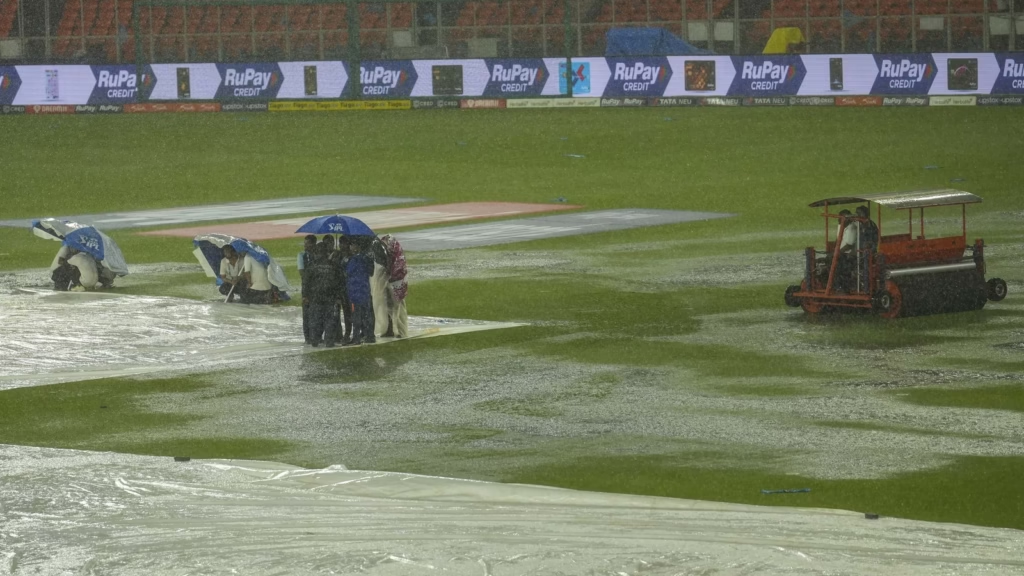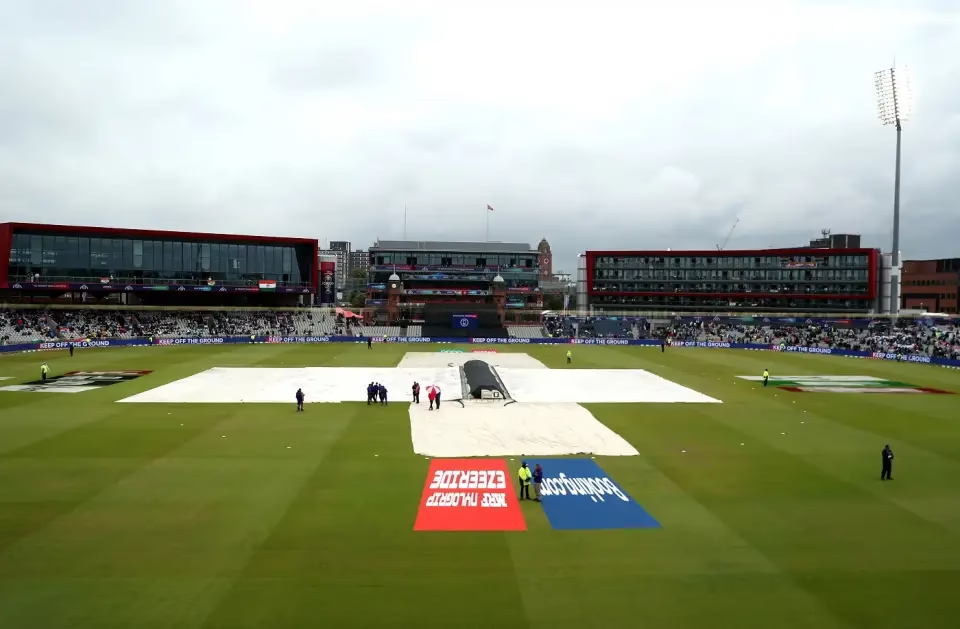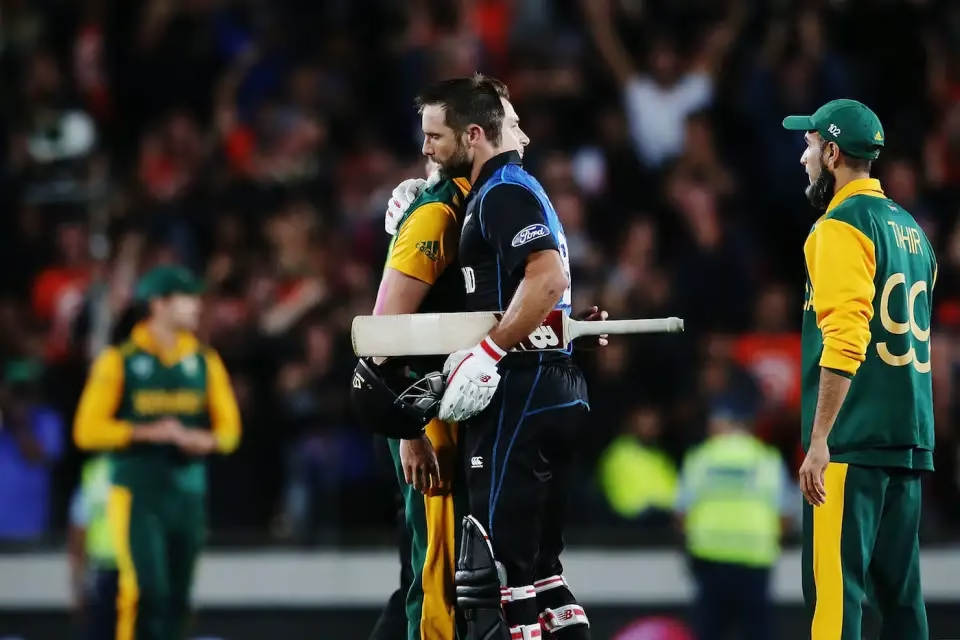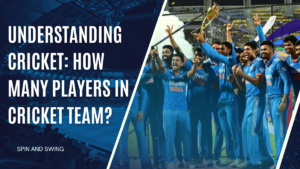Introduction: What is DLS Method mean in cricket?
The DLS method in cricket can be used to change the goals when games are interrupted. It first came into use in 1997 by Frank Duckworth and Tony Lewis. In 2014, the method was renamed to DLS due to professor Steven Stern enhanced the formula. The method is used to set a fair target by taking into account the number of wickets lost and overs remaining, as well as the overs players is playing in bad weather conditions impact the sport.
Why is the DLS Method Important?
The Duckworth-Lewis method plays an important role in limited-overs cricket by confirming a fair outcome when rain or bad light affects the game. Without a trustworthy method, choosing the result of rain-affected matches would be unfair to teams.
How Does the DLS Method Work?
The Duckworth Lewis formula uses a mathematical approach that takes into account:
- Number of overs left
- Wickets in hand
- Scoring resources available to the team
A Duckworth-Lewis calculator applies these factors to calculate fixed targets, confirming that teams have an equal opportunity to win the match.
10 Key Rules You Need to Know About the DLS Method
1. Overs and Wickets Define Resources
The Duckworth-Lewis method uses a percentage system to calculate a revised target when a match is interrupted. It considers the remaining overs and wickets to define the resources available, which affects the target. As the number of overs and wickets decreases, the target is adjusted to maintain fairness for both teams.
2. Par Score Calculation
At any point during a run chase, a par score is calculated based on how many resources the chasing team has used. If the match is interrupted and the team is ahead of the par score, they are declared the winner. If they’re behind, they lose.
3. Revised Target Formula
When overs are lost due to interruptions, the DLS method adjusts the target by comparing the percentage of resources available to both teams. This ensures that the new target is fair based on what each team could realistically achieve.
4. Rain Interruptions Impact Both Innings

If the first inning is interrupted, the batting team gets fewer overs, and the total they set is adjusted accordingly. If the second innings is interrupted, the DLS method recalculates a revised target based on how many overs and wickets are left.
5. DLS Calculation Changes for T20 and ODIs
The Duckworth-Lewis method is applied in both One Day Internationals (50 overs) and T20 matches (20 overs). While the formula stays the same, the impact of overs and wickets varies slightly to reflect the faster pace and scoring patterns of each format.
6. Impact of Early Wickets
Losing wickets early in the innings significantly reduces a team’s resources. This lowers their ability to chase or set a big total, and it affects the DLS calculations during any interruption.
7. Minimum Overs Requirement
For the Duckworth-Lewis method to apply, a minimum number of overs must be bowled:
ODI matches: At least 20 overs per side
T20 matches: At least 5 overs per side
If this minimum isn’t met, the match is declared a no result.
8. The DLS Calculator and Its Role
The DLS formula involves complex calculations, but official DLS calculators (used by match officials and available online) help determine revised targets quickly and accurately.
9. Revised Target for Multiple Interruptions
If a match faces more than one interruption, the DLS method recalculates the revised target after each stoppage, updating it based on the latest resource availability.
10. Adjustments for Different Formats
While the core DLS method remains the same, adjustments are made to match the scoring dynamics of ODIs and T20s. This ensures the targets are fair and realistic based on typical performance in each format.
Famous Matches Affected by the DLS Method
1. 2013 ICC Champions Trophy Final: India vs. England

A memorable match where the DLS method came into play was the 2013 ICC Champions Trophy Final between India and England. Persistent rain delayed the match, reducing it to 20 overs per side. India set a target of 130 runs after scoring 129/7 in their innings. England, despite being in a strong position during the chase, suffered a sudden collapse in the final overs and ended up 5 runs short, allowing India to crush their second Champions Trophy title in a dramatic finish.
2. 2015 World Cup Semi-Final: South Africa vs. New Zealand

Rain reduced the match to 43 overs per side, and the DLS method set New Zealand a target of 298 runs, which they successfully chased, leading to South Africa’s exit from the tournament.
Why is the DLS Method Criticized?
With its effectiveness, the Duckworth-Lewis method in cricket has faced criticism, especially in situations where chasing teams were unfairly disadvantaged. Critics claim that the formula sometimes fails to account for the momentum of a game, leaving the chasing team at a disadvantage.
How to Use a DLS Calculator?
To calculate the revised target or check the par score, you can use an online DLS calculator. It requires inputs like:
- Overs played
- Wickets lost
- Original target
The calculator instantly provides a revised target, giving an estimate of what the chasing team needs to win.
Duckworth Lewis Formula vs. VJD Method
However, the Duckworth-Lewis formula is widely used, and the VJD method (used in Indian domestic cricket) is considered an alternative. The VJD method focuses more on scoring patterns instead of just overs and wickets, making it more adaptable in exact conditions.
Conclusion
The DLS method in cricket confirms fairness in rain-affected matches by adjusting targets dynamically. While not perfect, it is the most widely accepted method globally and continues to grow to meet the challenges of modern-day cricket. By understanding these 10 key rules and using a DLS calculator effectively, fans and players can better appreciate the difficulties of the game. Get in-depth cricket analysis and updates at Spin and Swing.
FAQs
What is the Duckworth-Lewis method in cricket?
The DLS (Duckworth-Lewis-Stern) method is used to revise targets in rain-affected limited-overs matches by considering overs remaining and wickets lost.
How does the Duckworth-Lewis method work?
The DLS method calculates available resources using a percentage system and adjusts the target based on the interruption’s impact.
When is the Duckworth-Lewis method applied?
The DLS method is applied when rain or bad weather reduces the number of overs in a limited-overs match.
What is the minimum over-requishment for the DLS method?
In ODIs, at least 20 overs per side are required, while in T20s, a minimum of 5 overs must be bowled for the DLS method to determine a result.
What is a DLS calculator?
A DLS calculator is an online tool that helps calculate revised targets by applying the Duckworth-Lewis formula after a match interruption.



